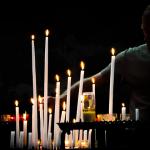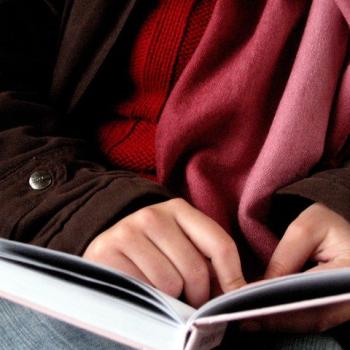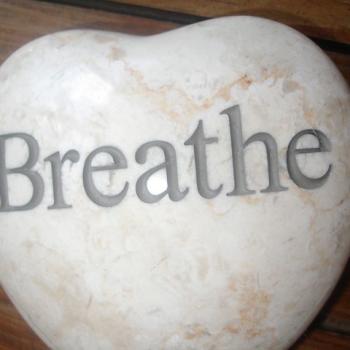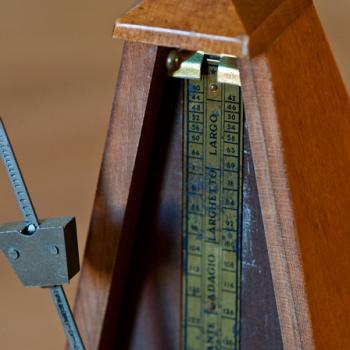
Recognizing Our Fellow Pilgrims
Many of us have been keeping ourselves isolated for months. We are slowly beginning to emerge again. It might be safe to begin practicing neighborhood pilgrimage again and renew our acquaintance with our fellow pilgrims.
A couple of months ago one of the people I meet for spiritual direction and I decided to read a book together. We chose Pilgrim at Tinker Creek by Annie Dillard.
But there is more to the present than a series of snapshots. We are not merely sensitized film; we have feelings, a memory for information and an eidetic memory for the imagery of our own pasts.
Annie Dillard is an inspiring writer. We are responding to her reflective prose by renewing our own practices of neighborhood pilgrimage. Each of us is also following her example by trying to put our own pilgrimages into words.
Pilgrim at Tinker Creek is Annie Dillard reflecting on a year spent in Virginia’s Roanoke Valley. Her writing recognizes her fellow pilgrims, animate and inanimate, seen and unseen. It is a book teeming with physical life as well as the life of reading and reflection.
My friend is a pilgrim in a neighborhood more like Annie Dillard’s Tinker Creek than my own neighborhood. My Southern California neighborhood pilgrimages are full of traffic and other distractions. It can be a challenge to pay attention and stay in the present moment.
Consciousness itself does not hinder living in the present. In fact it is only to a heightened awareness that the great door of the present opens at all. . . . Self-consciousness, however, does hinder the experience of the present. It is the one instrument that unplugs all the rest.
The challenge we face in following Annie Dillard’s inspiring example is recognizing our fellow pilgrims.
How Do We Recognize Our Fellow Pilgrims?
It is more challenging for me to recognize my fellow pilgrims now than before we started to quarantine ourselves. Months apart have made even people I know seem less familiar. I also miss the nonverbal cues from the parts of our faces below the eyes.
While our eyes are the windows of our souls, I miss seeing people smile. It was different when I set off on a pilgrimage in my neighborhood before the pandemic.
When I met someone while I was walking along, we might make eye contact. Our eyes would signal whether we were friendly or not, and we could exchange smiles even if we did not speak.
It is more difficult now when I cannot tell whether some0one is smiling. We are still wearing masks here, for another three or four weeks. It is more than that.
I find people more reluctant to make eye contact now as we walk down the street. It might be because we have been uncertain and protective for months. We have turned toward our fears and anxiety. It is more important to maintain a specific distance than to make eye contact. Everyone we meet is a potential threat.
Now, as we restart our neighborhood pilgrimage practices, it is more significant to recognize our fellow pilgrims. We need to appreciate the people we meet on our walks and receive the gifts they offer us.
Each of us has our own stories to share, including our pandemic stories. The people we see on our travels are not simply obstacles to be avoided. It is important for us to recognize our fellow pilgrims.
We offer our own eye contact and an attitude of listening, letting people know we see them as our fellow pilgrims.
In a few weeks we will reassure them with a smile.
Appreciating Our Fellow Pilgrims
It is easy to appreciate some of the people we meet on our neighborhood pilgrimages. Some of them are there to help us decide where to go or show us deeper truths. There are people with whom we share our stories, who listen and ask insightful questions.
Appreciating other people can be more challenging. We might meet people with whom we disagree, who seem to have a hard time understanding or appreciating us.
Some people almost appear to throw roadblocks into our path. They seem to be trying to distract or divert us, to keep us from continuing our pilgrimage.
I believe we can be people who listen and pay attention to our fellow pilgrims. Sometimes, with some people, we need to be clear about how we are and are not willing to help.
Our neighborhood pilgrimages take us to new places where we meet new people. We can be open and appreciative while also being focused and persistent.
We learn many lessons on our pilgrimages, including how to live wisely and well with our fellow pilgrims. Each of us is walking our own path and dealing with our own challenges. We persist by taking another step.
Helping Our Fellow Pilgrims
Some of our fellow pilgrims give us the gift of showing us how to help them.
Each of us is making our own personal pilgrimage and we each carry our own burdens. We may be just starting, taking our first steps on a new path. Some of us might be loaded down with regrets from our past or fears about our future. Many of us could be growing tired and need to take some time for rest.
We help our fellow pilgrims, not when we tell them what to do or try to solve their problems for them. Sometimes the most helpful thing we can do for someone is give them time to think, or reflect, or rest.
As we take our neighborhood pilgrimages we remember we never know when we will need someone else’s help. Each trip, each step, can be an opportunity for us to give and receive recognition and help.
I look forward to the time when we remove our masks and share our true selves with our fellow pilgrims.
How can we learn to recognize and appreciate our fellow pilgrims in new ways today?
When will help our fellow pilgrims this week?
[Image by Olgierd]
Greg Richardson is a spiritual director in Southern California. He is a recovering assistant district attorney and associate university professor, and is a lay Oblate with New Camaldoli Hermitage near Big Sur, California. Greg’s website is StrategicMonk.com and his email address is [email protected].












